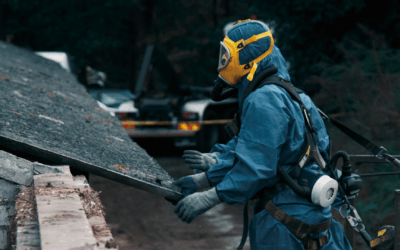The 6 types of asbestos
For decades, asbestos was an extremely popular building material. It is fire resistant and a great insulator, and was used throughout New Zealand in new homes and businesses.
But asbestos is not just one material; there are actually six different types of asbestos. Three of these are very rare, three are more common, and one in particular was used often in New Zealand construction.
Here’s a little more about the six types of asbestos:
Chrysotile (white asbestos)
When you think about asbestos, you often think of a powdery white substance. That’s probably because of chrysotile, also known as white asbestos, which is the most common type of asbestos used in New Zealand.
Chrysolite is composed of fine white fibres that are short and curly, and offer a large amount of heat resistance. It was used for insulation in everything from roofs and ceilings to floors and walls, but was also used in the auto industry for products such as brake pads.
As chrysotile is the most common type of asbestos in New Zealand, it is also responsible for the most health problems.
Crocidolite (blue asbestos)
Crocidolite is blue-tinged, long and brittle, and can break down easily and get into the air. This type of asbestos is extra dangerous because of its extremely thin fibres that can lodge more easily in the lungs. It is less common than chrysolite, but still found in homes and buildings in New Zealand.
Amosite (brown asbestos)
Amosite was often used in electrical insulation and thermal insulation, as it is very strong and resistant to heat. This type of asbestos was mostly mined in South Africa, and over time has become known to lead to higher incidences of cancer than the more common white asbestos. While brown asbestos was used across New Zealand prior to the 1990s, it is still less common than white asbestos.
Anthophyllite
Anthophyllite has long, needle-like fibres, and is a little different, as this type of asbestos was not specifically used in building materials. Instead, it became a contaminant, and could be found in some talcum powders and some composite flooring products. For now, there’s less of a link between anthophyllite and asbestos-caused cancers, but should still be treated as dangerous just in case.
Tremolite
Tremolite is another type of asbestos that was not usually used on purpose – manufacturers instead found tremolite as a contaminant in products such as talcum powder, sealant, and paint. It has sharp fibres that are easy to inhale when it is found, and is therefore a real threat to health. Fortunately, tremolite is not often found in New Zealand.
Actinolite
Actinolite is most often found in paint products and sealant, although was sometimes also used in insulation products. However, actinolite was usually a contaminant in other products, rather than created for commercial use.
Professional asbestos removal
No matter what type of asbestos is present in your home or workplace, whether it’s a common type or one rarely seen in New Zealand, professional asbestos removal is essential for your health and safety.
PRO Environmental Services offers expert asbestos removal across the lower North Island and upper South Island, and will provide you with the all clear and a re-occupation certificate following removal.
Contact us today for a free, no-obligation quote for asbestos removal.
Related articles from our blog
Environmental Laws and Regulations: How They Protect the Planet
Environmental laws and regulations exist to keep both humans and the environment safe from hazardous materials. We follow them on every project, every time.
Asbestos Awareness Week: What you need to know
Asbestos Awareness Week is next month. Here are some important asbestos facts, tips on minimising your risk, and who to call if you need asbestos removal!
When to review your asbestos management plan
There are multiple scenarios under which you are required to review your asbestos management plan as your worksite’s PCBU. Read on to learn more.


